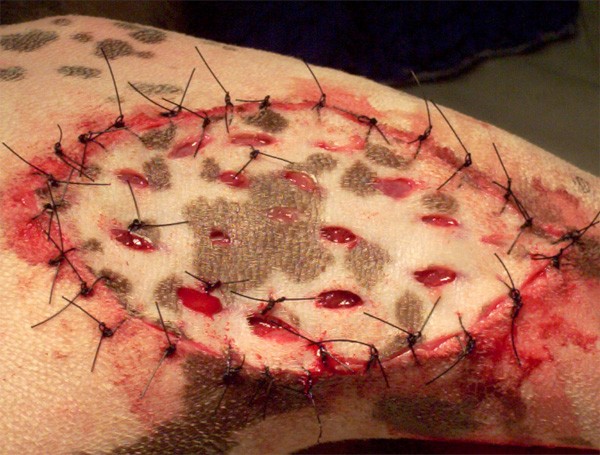Meshed skin grafts have several advantages over non-meshed grafts.

Meshing is the creation of several rows of staggered, parallel incisions into a graft. Usually, a number 11 scalpel blade is used to make incisions 1cm long and roughly 1-2cm apart along the long axis of the graft.
The resultant mesh allows the graft to be stretched in two directions, increasing its flexibility and helping it conform to various shapes of wound.
For a given size of wound a smaller donor segment is required for meshed grafts because of the potential expansion, which may be helpful when a large wound requires reconstruction.
Small “pegs” of granulation tissue often grow into the meshed holes, providing further support and apposition between the graft and its bed. Also, meshed grafts allow passive drainage of fluid through the mesh holes, preventing accumulation of fluid under the graft, which could adversely affect graft take.

Leave a Reply